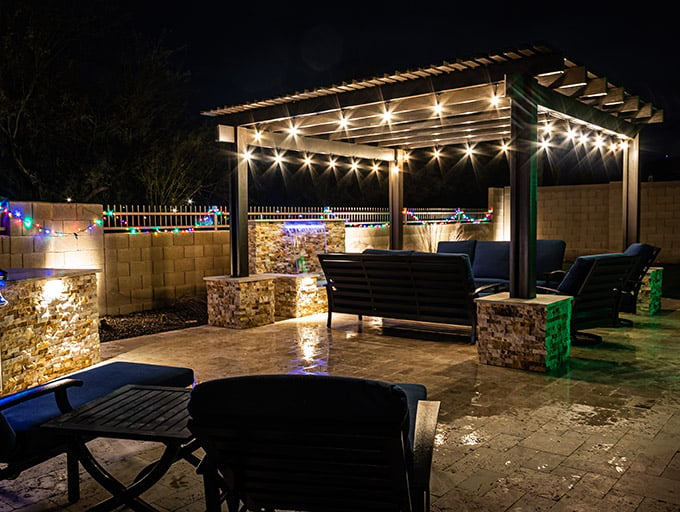What Is Community Mental Health & Who In Your City Can Help?

Contents
Every one of us wants to live in a great place. But a flourishing community doesn’t just come into being on its own. Instead, millions of small actions by everyday citizens help create an area’s quality of life.
For example:
- Bringing your child’s teacher a small present
- Picking up a plastic bag off the street
- Helping a neighbor lift something heavy
- Paying it forward to someone in need
- Planting flowers outside to brighten the neighborhood
- Letting someone pass you in traffic
Altogether, these gestures add up to build trust and safety in your neighborhood. They also promote a greater sense of connection. And that’s essential for community mental health.
What is community mental health exactly?
When we talk about community mental health, we’re often speaking about the level of psychological wellness in a local population. It’s a measure tied to physical, social, economic, and environmental factors.
But, the American Psychological Association (APA) talks about community mental health as an approach to wellness. It defines the term as “activities that promote mental health that are performed in the community instead of institutional settings."
From this, we can gather that our community is a setting where real healing and recovery can take place.
Another organization, the World Psychiatric Association (WPA), tells us something interesting about recovery. It says that clinical support is sometimes only necessary because of the lack of family and peer support.
So, there’s a big takeaway here: Local social networks can make a big difference in citizens’ mental health.
That leaves a VERY important role for our communities in city-wide wellness campaigns.
Additional research confirms what so many of us suspect: “Neighborhoods with higher levels of social cohesion experience lower rates of mental health problems than neighborhoods with lower social cohesion...”
Why might that be?
Well, being with other humans helps us “get out of our own heads”, bond, and relate. It helps us feel known, seen, and supported.
Says mental health organization NAMI (National Alliance on Mental Illness), "Community is not just an entity or a group of people, it’s a feeling. It’s feeling connected to others, feeling accepted for who you are and feeling supported. Having connection can help us feel wanted and loved.”
Being with others not only engages us emotionally and socially but physically, too. It often gets our bodies moving up and out of the house. And it puts us in contact with nature – whether that’s playing softball in the park or briefly crunching through snow in winter.
Basically, the fruit of a connected, engaged citizenry is community mental health.
What are the signs of a thriving community?
Close your eyes and imagine a flourishing neighborhood. What do you see?
For many of us, it’s images of smiling faces and people laughing and interacting. Frequent get-togethers and bustling storefronts. A clean, well-maintained, and welcoming environment.
So we could say a healthy, vibrant community looks like all these things and more. Including:
- Regular physical activity and interaction
- Successful small local businesses
- High engagement and regular gatherings
- Consistent use of public lands and local facilities
- A safe, well-maintained environment
- Helpful resources and support for citizens
Some warning signs of a deteriorating community
Now, imagine a neighborhood in a downward spiral. What comes to mind? Many of us will picture:
- Vacant storefronts, vanishing small businesses
- Homelessness, crime, high stress, low trust
- Litter on the streets, unmaintained parks, buildings, roads, and facilities
- Few events and community engagements
Indeed, worsening community mental health often shows up in environmental and economic ways first. And a decline in events means that people live with less activity and more isolation. We certainly saw this during the pandemic.
By that last measure, we’re collectively coming out of a period of declining mental health.
What can be done and who can help? Let’s take a look.
Who's involved in community mental health?
You’ve already seen it. Each one of us can make a difference in each others’ lives through thoughtful actions. So, tending to those people and things around us is an important step toward local wellbeing.
From there, the people that steward a city’s gathering places and policies are in uniquely strategic positions to make an impact.
How key community roles can promote public health
If you’re a city official or a facility manager, you can make a big difference in city-wide mental health. How? By creating more spaces for people to move, play, network, and engage.
Here are the key to-dos for each role:
Mayor or City Office
Create programs that promote a high quality of life for residents. In particular, really listen to small business owners and provide what they need. You'll also want to encourage gatherings and events. Promote public land and community space usage. Keep a database of available spaces for rent. Finally, collaborate with the public to keep a well-maintained local environment.
Parks and Recreation
In parks and rec, your focus is often on expanding community engagement. Consider a partnership with public health agencies to serve populations in need. Clearly advertise that your facilities are available for rental. And don’t forget impeccable maintenance. You want to make those trails, fields, pools, courts, and parks inviting to the public!
Private Sports Facility
Make a variety of spaces within your facility accessible to local residents. Let people know they're available to rent, even for small events. Provide awesome photos and really show off your spaces, online and off! Create easy-to-access rental terms and a process that’s simple to navigate.
Churches and Faith Centers
Consider hosting events that are open to the public at large. You might also make the church building and grounds available to the community. Be sure to list clear criteria for rentals. Give local residents a sense of the possibilities with on and offline marketing.
Banquet Hall or Small Venue
People often gather in banquet halls and small venues for very special occasions. So they want a location that matches their vision. Get honest feedback on perceptions of the venue. Find out what people desire and need. Then be willing to make any modifications to update the space and its processes. Also, market the venue as a versatile space with diverse uses - and you’ll see new types of community engagement!
Owner/Manager
So you run a small local business like a bowling alley, race track, performing arts space, or coffee shop. You’re already a pro at serving the public, but you want to do more for the people in your area. Consider opening up your facility as a place to rent. From there, marketing and creating clear rental procedures should be your top priorities.
All of these roles can benefit from similar strategies.
City officials and facility managers alike can increase engagement easily. It all boils down to the same key strategies:
- Engage in ongoing communication with community members. Get to know their needs, pain points, and dreams.
- Make sure local residents know which spaces are available to them. Employ online marketing and great photos.
- Use facilities and neighborhood spaces to their greatest potential. You can be visionary here!
- Streamline and modernize the rental process. (A good facility scheduling software can help with this!)
- Encourage putting extra revenue streams created by rentals back into the local economy.
Ultimately the solution is meaningful community engagement
So you see. Encouraging engagement is a vital way to boost your community’s mental health.
But how you do this depends on your unique situation.
First, we can all perform at least one small action to help people close to us every day. Whether that’s recycling a can or listening to a friend - it’s all good. Every gesture helps build the fabric of community wellness!
Then, if you’re a city official or venue manager, you’ll want to open up the full range of your spaces to the public. This also increases essential small business revenue. And that often ends up going back into the local economy. Which boosts your city's possibilities some more!
Also, collaborate with the community to maintain a clean environment. This makes people feel safe and inspired to explore.
Above all, listen to people. Find out their pains and problems, what they’re missing as well as what they’re enjoying. Help them out whenever you can
It takes all of us to create a thriving culture. So whatever municipal role you’re in, put your heart into it. Do everything you can to make your city, county, or neighborhood a better place.
Especially, encourage people to get together. This kind of focus can boost community health off the charts!
Finally, make it easy for them to find places to gather with an online public space rental software like Spotz. Learn more about how to promote your facility’s rental spaces with our helpful guide!



